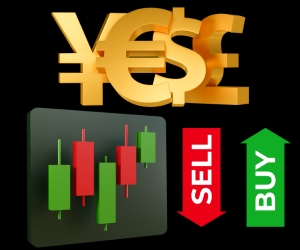VIX INDEX TRADING GUIDE
This guide delves into the essential aspects of trading the VIX, from understanding the index to exploring various trading strategies. Discover why the VIX, known as the "fear index," is a valuable tool for measuring market volatility. Learn advanced techniques like using futures and options to capitalize on VIX movements. We also cover essential tools and resources, including research platforms, educational materials, and trading communities that keep you informed and connected. Additionally, our guide emphasizes the importance of emotional control, robust risk management, and continuous learning to successfully navigate the complexities of the market. Finally, we offer practical insights to guide you in creating a detailed trading plan and leveraging technology to refine your strategies. Dive in to equip yourself with the knowledge and tools necessary to successfully trade the VIX.

How to Trade the VIX Index
The VIX (Volatility Index), also known as the “fear index,” measures the implied volatility in the options market of the S&P 500. It is a key reference for evaluating uncertainty in the financial markets, as it tends to rise when there is nervousness and fall when markets are stable. Its operation is different from traditional indices, as you cannot directly invest in the VIX, but you can invest in derivatives and financial products linked to it.
Characteristics of the VIX in Trading
Volatility Index: It does not measure market direction but the expected 30-day volatility of the S&P 500.
Inverse Movements to the S&P 500: Generally, when the S&P 500 falls, the VIX rises, and vice versa.
Cannot Be Bought Directly: It is traded via futures, ETFs, and options derived from the index.
High Volatility: It can move sharply within minutes or days in response to market events.
Instruments to Trade the VIX
VIX Futures: Contracts that allow speculation on the future direction of volatility. They are traded on the Cboe Futures Exchange (CFE).
ETFs and ETNs on the VIX: Products designed to replicate the VIX's evolution through futures, such as VXX or UVXY.
Options on the VIX: Advanced trading and hedging strategies based on volatility.
CFDs on the VIX: An accessible alternative for retail traders seeking exposure to volatility without trading complex derivatives.
Trading Strategies for the VIX
1. Volatility Spike Investment Strategy
The VIX tends to surge during times of crisis or high uncertainty, offering trading opportunities.
Buy VIX ETFs: Trade products like VXX when a developing crisis is detected.
Sell Options on the VIX: Take advantage of premium overvaluation when volatility spikes.
2. Market Downturn Hedging Strategy
Investors can use the VIX to protect their portfolios during times of uncertainty.
Buy VIX Futures: As protection against severe downturns in equity markets.
Use Call Options: Acquire call options on the VIX when there are risk signals in the markets.
3. VIX Range Trading
The VIX often moves within defined ranges in stable markets, allowing mean reversion strategies.
Sell VIX ETFs: When volatility returns to normal levels after a spike.
Options Spread Strategies: Like the iron condor, to benefit from VIX stability in specific ranges.
4. Correlations and Macroeconomic Factors
The VIX is influenced by various economic and political factors.
S&P 500 Movements: A bull market usually leads to a low VIX, while strong declines elevate it.
Fed Decisions: Changes in interest rates can affect expected volatility.
Geopolitical Events: Global crises can cause sudden spikes in the VIX.
Risk Management When Trading the VIX
Leverage Control: Trade prudently, as VIX movements can be extreme.
Use of Stop-Loss: Protect against unexpected movements.
Monitoring Key Events: Follow macroeconomic data and news that may generate volatility spikes.
Avoid Emotional Trading: Do not trade based on market fear or euphoria.
SWOT Analysis of the VIX as an Index
The VIX, known as the volatility index, measures expectations of volatility in the US stock market. This SWOT analysis evaluates the factors influencing its behavior and usefulness as a tool for investors seeking to manage risks.
Strengths:
Key indicator of volatility: The VIX is widely used by investors to measure risk and anticipate market changes.
High liquidity: As a globally recognized indicator, the VIX offers opportunities for short-term trading.
Weaknesses:
Dependence on market volatility: Its value can change drastically in response to market events, making it very sensitive to crises and panics.
Opportunities:
Tool for hedging strategies: The VIX allows traders to implement hedging and arbitrage strategies during periods of high uncertainty.
Innovation in derivative products: The development of new financial instruments based on the VIX can expand its use and attract more investment.
Threats:
Global instability: Economic crises and geopolitical events can cause extreme spikes in the VIX, making it difficult to forecast and manage risks.
Competition from alternative indicators: Other volatility indices or quantitative models may compete for investors' attention.
What is an International Stock Broker?
An International Stock Broker is the entity (or platform) that allows you to buy and sell shares of companies listed on stock exchanges in different countries around the world. Unlike a local broker, its main focus is on providing access to global markets, such as the US, European, or Asian markets.
Why do we need an International Stock Broker?
Investing in international stocks can be an excellent way to diversify your portfolio, as it offers you the opportunity to participate in the growth of economies and sectors worldwide. However, operating in global markets is not as simple as trading in the local market: it requires specific knowledge, compliance with international regulations, and the use of advanced trading platforms.
An International Stock Broker consolidates all these investment opportunities in one place and allows you to access different exchanges and trading conditions, in exchange for a commission.
Examples and Comparisons:
There are several well-known International Stock Brokers, such as Interactive Brokers, eToro, TD Ameritrade, or Saxo Bank, among others. Each offers trading platforms with particular features and commissions that vary depending on the service. Some excel by providing market analysis and advice in various languages, while others may offer more competitive operating costs or social investment tools. These details allow you to choose the option that best suits your needs and investor profile.
Regulatory and Security Aspects
It is essential that the International Stock Broker you choose is regulated by recognized entities in the country where it operates, such as the U.S. Securities and Exchange Commission (SEC) in the United States, the Financial Conduct Authority (FCA) in the United Kingdom, or the Securities and Exchange Commission (CVM) in Brazil, among others. This oversight ensures that the broker complies with strict security and transparency standards, providing you with greater confidence when investing your money.
How do Brokers “connect” to International Markets?
Through agreements with foreign stock exchanges and the use of advanced technological platforms, International Stock Brokers process the buy and sell orders placed by their clients. They execute transactions based on price, order of arrival, and other parameters, and charge a commission when the transaction is executed. This technological infrastructure allows operations to be carried out quickly and securely, facilitating real-time tracking of your investments.
In conclusion, an International Stock Broker is your gateway to the world's most important stock markets. Thanks to its regulation, trading platforms, and knowledge of global markets, you will be able to diversify your portfolio and seek growth opportunities in different sectors and countries.








